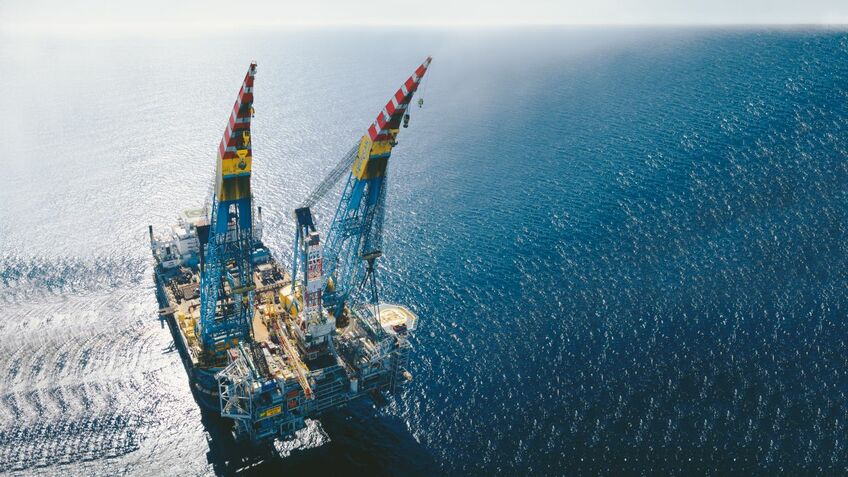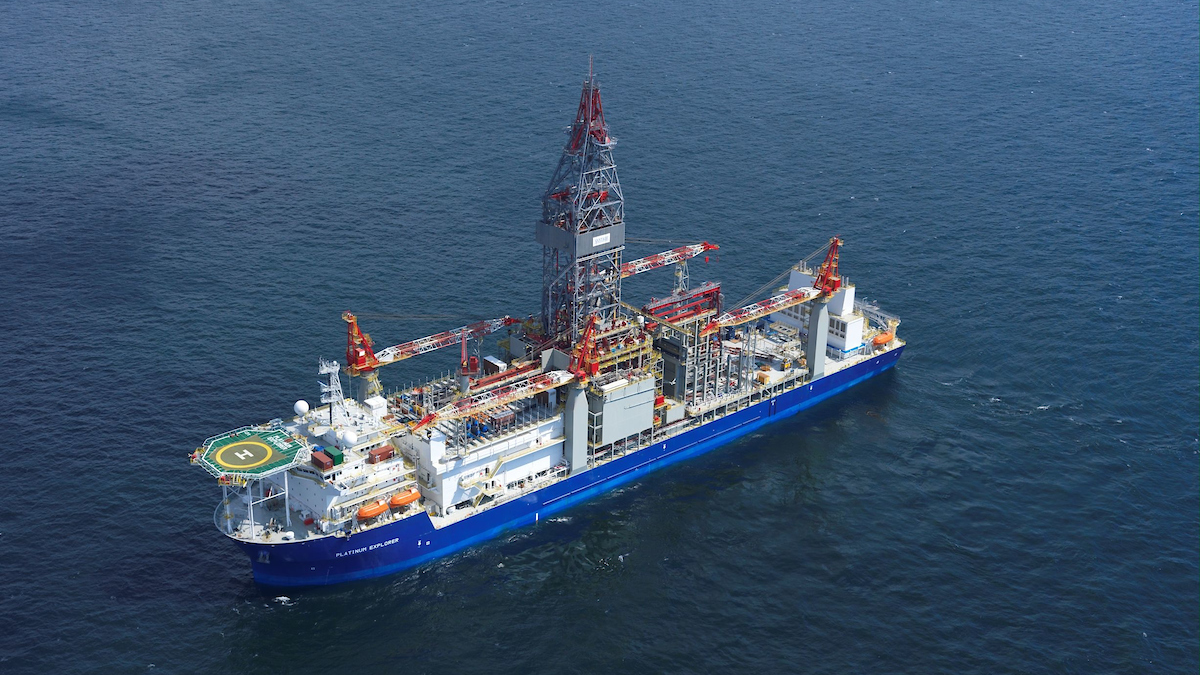Business Sectors
Events
Contents
AHTS market: the good and the bad
In the offshore supply vessel market in the North Sea there has been something of a shift in focus from anchor-handling tug/supply (AHTS) vessels to platform supply vessels (PSVs). According to market intelligence experts IHS Petrodata, AHTS/AHT vessels now make up just 32 per cent (145) of the current worldwide support vessel orderbook of 459 vessels, with PSVs representing 68 per cent (314 vessels).
This has come about as a result of a hefty increase in the number of large, sophisticated PSVs ordered during the last 36 months, while the number of AHTS orders has steadily declined. In northwest Europe, of the 39 vessels currently under construction, just six of these are AHTS vessels, with the rest PSVs. All but seven of these vessels (six in Spain and one in the Netherlands) are being built at yards in Norway. Just a few years ago, over half of the OSVs on order worldwide were for anchor handlers. So why the change in focus?
First of all, one must look at the general problem of oversupply in the OSV market, and in the North Sea in particular. In Norway, the UK and the Netherlands, AHTS vessels are generally used for two main things – moving rigs, and providing supply duties to offshore locations. Anchor handlers with cranes, remotely operated vehicles (ROVs) and other specialised equipment have the ability to move into subsea and construction support markets, but there is the added cost of adding such things to the vessel.
During quiet periods in the market, when few rig moves are taking place, AHTS vessels often sit idle at ports in Aberdeen and Stavanger. This is a significant problem, given that large anchor handlers, built at established Norwegian yards which tend to guarantee quality and timeliness when delivering the vessels, can cost upwards of US$100 million to build.
Having it come out of the shipyard only to sit idle isn’t exactly good news if you have invested such a significant amount of money in acquiring the vessel. Moreover, during quiet periods in the market, AHTS vessels are not only competing with similar tonnage, they are also competing with PSVs for general supply and cargo run duties.
The increased above and below deck capabilities of a 4,000+ dwt, 1,000m2 PSV means that the operator will more than likely choose an available PSV rather than an AHTS vessel. And they will have to pay less for it, too, especially given the fact that large AHTS vessels are very expensive to run – meaning that the owner of such a vessel may be forced to accept a day rate beneath operating cost if they want to keep the vessel utilised.
Vessel companies, and potential investors, are also looking at projected demand in the North Sea over the next few years as a reason to switch from AHTS vessels to PSVs. According to IHS Petrodata, term demand (the requirement for a vessel to work on a contract lasting at least 30 days firm) is expected to increase only marginally for large AHTS vessels, given that these vessels are mainly required for rig move spot contracts, lasting perhaps four or five days at a time.
On the large PSV side (4,000+ dwt) of the market, however, IHS believes that term demand will increase by approximately 20% from the first quarter of 2013, to the first quarter of 2016. Although the cost of a large PSV at a yard in Norway is still very high – in the region of US$50 million and above – such vessels have proved extremely popular with major OSV players in Europe over the last three years. Companies like Havila Shipping, Gulf Offshore, Solstad Shipping, Island Offshore, DOF and Olympic Shipping are just some examples of North Sea players ordering up large PSVs in recent times ahead of this projected increase in demand.
Some anchor handlers have been ordered during that time – just nowhere near the number of PSVs.
The recent laying up of a large and very expensively ordered AHTS vessel by Norway-based Siem Offshore also highlights the challenges faced by owners of such vessels in recent times. Siem Garnet, a VS491CD design vessel was laid up by Siem at the end of 2012, after picking up below-operating-cost day rates on the spot market.
That vessel has since returned to the market to begin a term fixture – however, the couple of months that it spent cold staked didn’t do its owner any favours in terms of paying back the reported US$94 million that it cost to build.
Despite the fact that owners of large AHTS vessels have undoubtedly been faced with challenging market conditions over the last couple of years, there has been some positive news to report of late. As described in last month’s edition of OSJ, March proved to be a very good month for owners of this type of tonnage. Day rates were up significantly from the previous month on the back of a tightened market, and vessel owners would have been satisfied to see this positive momentum continue into April and May.
As it turned out, things improved more dramatically than anyone could have foreseen, with a sequence of events leading to the highest day rates for over 18 months being paid in the North Sea.
The availability of up to 40 PSVs and AHTS vessels during quiet periods on the North Sea spot market has become all too common in recent times. A supply/demand balance which is that much in the favour of chartering companies can only lead to one thing – desperately low day rates.
When the number of available vessels is significantly high, PSV day rates can drop as low as £3,000 per day, while AHTS vessels might be forced to take on general supply duties jobs for less than £10,000 per day. While this makes particularly good reading for oil companies and other charterers, who can pick up the highest quality tonnage at rock bottom prices, this can cause drastic problems for vessel owners.
When the shoe is on the other foot, however, and the availability of vessels drops to near zero, then there is still excellent money to be made in the North Sea from an AHTS vessel owner perspective – as was proved during April and May. Ironically, Siem Offshore, which was forced to lay up valuable tonnage just a couple of months ago, was the big winner during April.
In late April, a plethora of rig moves took place over a period of approximately one week. With a rig move usually requiring three or four AHTS vessels to complete the job, this took a massive chunk of availability away, forcing charterers to pay premium prices in order to secure tonnage. This was the case for Norwegian energy giant Statoil, which required vessels to move the semi-submersible rig Songa Trym to its new location in the North Sea. With next to no vessels left available to carry out the move, Siem Offshore’s 2011-built Siem Opal was hired at an impressive reported day rate of NKr1.7 million (US$292,000), which was the highest day rate paid in the North Sea since October 2011.
Given that Statoil would be losing significantly more in terms of time and rig operating costs, it was forced to bite the bullet and shell out the cash for the vessel there and then, to avoid losing more cash later.
Siem Offshore has undoubtedly endured an up-and-down start to 2013, and this was reflected in the commentary posted alongside its recent quarterly results, which saw operating revenues drop from US$90.9 million in the first quarter of 2012, to US$79.8 million for the first quarter of this year. The owner expressed concern for the short-term future of the North Sea OSV market, but is in fact very positive regarding the overall future of the worldwide OSV market.
Siem said in a statement: “In general, the North Sea spot markets are still characterised by an imbalance between supply and demand due to an overweight of both PSV and AHTS vessels operating in the spot market. There is uncertainty with respect to the market’s ability to absorb the high number of PSV newbuilds to be delivered in the next 12-18 months.” The company was more positive thereafter, saying: “The general outlook for demand of high-end offshore supply vessels remains favourable. There are an increasing number of firm contracts for rigs, FPSOs and subsea projects in Brazil, the US Gulf of Mexico and in West Africa. Increased activities in harsh and/or remote areas (Barents Sea, Greenland, Canada, US Alaska, Santos Basin Brazil) are also expected to require high-end PSVs and AHTS vessels.”
And it wasn’t just Siem Offshore cashing in on the incredibly tight market at the end of April – several of its rivals also got in on the act. Fellow Norwegian company Solstad Offshore often trades some of its larger AHTS vessels on the North Sea spot market, and at the end of April, it was trading the Far Sapphire and Far Scorpion anchor handlers, built in 2007 and 2009 respectively.
According to IHS Petrodata, the duo were each hired on 14-day rig move contracts, moving the semi-submersible rig Borgland Dolphin on behalf of MLS for NKr900,000 (US$156,000) per day. To show how quickly the market can change, Far Scorpion had been hired by Shell to move the semi-submersible Transocean Barents by Shell at a comparatively small rate of NKr230,000 (US$40,000) per day just a week or so earlier.
Late April proved to be a particularly prolific period of chartering by MLS, which also needed vessels to move the semi-submersible drilling rig Bredford Dolphin. The charterer reportedly paid K Line Offshore NKr800,000 (US$138,000) per day to hire the large AHTS vessel KL Saltfjord, while Havila Shipping’s Havila Jupiter and an Island Offshore-managed duo were reportedly fixed at NKr600,000 (US$104,000) per day each for the same rig move. Norway-based DOF, meanwhile, saw one of its large anchor handlers – the 1999-built Skandi Stord – fixed by Premier Oil to move the semi-submersible WilPhoenix on a £95,000 (US$147,000) per day contract at the beginning of May.
In late April, the same vessel carried out a heading control spot fixture for Team Marine at a reported £23,000 (US$35,600) per day, while in mid-April, it carried out a cargo run for MLS, being paid just NKr95,000 (US$16,500) per day for that job. Maersk Supply Service, Rem Offshore and Viking Supply Ships are other examples of companies picking up very high day rates in late April/early May, something which they hope will continue into the traditionally busy summer months of June and July.
Norwegian player Deep Sea Supply, meanwhile, revealed that it had achieved much improved average day rates for its fleet of 14 AHTS vessels in April, compared with March. The average gross income per AHTS per day was US$19,700 in April, compared to just US$18,800 in March, again highlighting the positive vibes within this sector of the OSV market.
Such fixtures show the potential for excellent returns to be made for players in the North Sea OSV market. With the overall size of the orderbook coming down steadily year on year as vessel companies try to counter the issue of oversupply, it is hoped that such periods of high rates can stay longer than the odd week or two here and there.
Most owners would be much happier with a much steadier day rate, which covers their operating costs and makes a small consistent profit on each fixture as opposed to these dramatic highs and lows; however, they know that will be very difficult in the ever fluctuating spot market.
They therefore have to make the most of these profitable periods when they come along, while also being prepared for chartering companies to squeeze their profits as soon as the supply/demand balance falls back in their favour.
And therein, perhaps, is the big problem that is caused by such dramatic highs and lows. The period in late April proved to be very good for vessel owners, but the rates in excess of US$100,000 were only likely to stay around for just a few days, as a host of vessels returned to availability following the completion of their rig moves.
When times are bad, however, the high availability of vessels can last for several weeks, meaning that, in the end, chartering companies still profit over the course of a year in the OSV market, as the profitable periods for them last much longer. OSJ
Related to this Story
Women in Maritime Today: Elin Saltkjel says no day working in maritime is dull
Events
Maritime Environmental Protection Webinar Week
Cyber & Vessel Security Webinar Week
The illusion of safety: what we're getting wrong about crews, tech, and fatigue
Responsible Ship Recycling Forum 2025
© 2024 Riviera Maritime Media Ltd.













